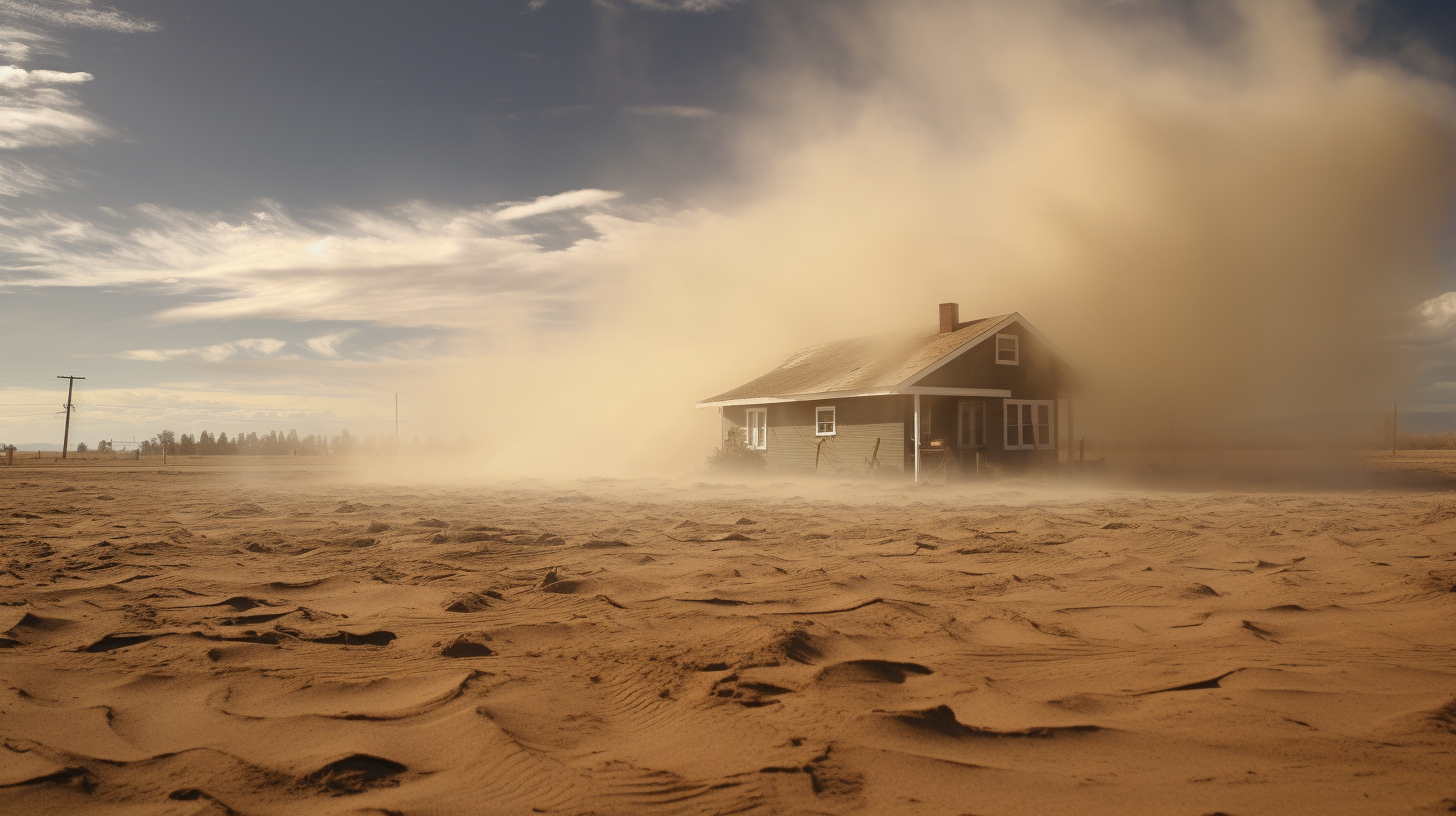Imagine a world where the rustle of leaves is but a whispered legend and the fertility of soil nothing more than a tale from eons past. Our infamous human hubris led us to believe we could outsmart nature herself, indulging in a dance of destructiveness that has now led to the grand crescendo – a ceaseless stretch of withered wastelands where our bountiful crops once stood. This is not the setting of a dystopian novel; this is the visceral reality of our new era of desertification, the Dust Bowl Chronicles.
The term ‘Dust Bowl’ once referred to a historical period of severe dust storms that devastated the American and Canadian prairies during the 1930s. Today, however, it is no longer a feature of textbooks but a global phenomenon, a testament to environmental disregard. Entire ecosystems, which took millennia to sculpt, have succumbed to the parched death-grip of desert sands in mere decades.
Amidst these expanses of desolation, faint echoes of a bygone era rise like mirages. Communities that once celebrated the rhythm of seasons now mark time by the encroaching sands. ‘To watch the land you’ve loved, transform into a sterile ocean of dust, is to witness the earth whispering its final eulogies,’ shares a former farmer, his voice a subdued note against the howling of the wind.
The new Dust Bowls are symptomatic of a larger dysfunction, fed by rampant deforestation, relentless aquifer depletion, and reckless carbon emissions. Industrial agriculture is but a ghost here – its machinery standing in silent vigil over the bones of its conquests. The overlords of agribusiness, once hailed as pioneers, stand accused by the relentless spread of sterility. As one drives through the abandoned heartlands, it is hard not to feel the dust-laden breath of disenchantment.
But what of those who still cling to these barren lands? Their resilience, a hollow defiance against the desolate chorus of abandonment, is not a choice but a grim necessity. ‘We survive on the currency of hope, bartering with despair,’ whispers a local survivor, her eyes tracing the skyline where dust storms roam with unchallenged sovereignty.
The repercussions of this expansive desertification send shockwaves through our already brittle world systems. Food insecurity, climate migration, and geopolitical tensions are but the first ripples on the surface of a deep and turbulent sea of consequences. Our dealings in the currency of ecological exploitation have borne us a bank of ruinous dividends.
Yet, amid the bleak tableau, there remains a pulse of defiance – a quest for regeneration where it seems no dawn will break. The soil, though beaten and battered, is replete with the latent promise of birth. Some intrepid souls are turning away from the traditional tillage and the siren song of fertilizers, instead delving into the ancient practices of soil regeneration. Through permaculture, cover cropping, and agroforestry, they dare to whisper back to the earth in hopes of a reply.
The path before us, while shrouded in the thick dust of our misdeeds, still harbors the possibility of change. However, is it enough? Is the voice of reformation capable of mustering a chorus loud enough to contend with the staggering scale of damage we have inflicted upon our world?
In the final account, ‘The New Era of Desertification’ is an unvarnished chronicle of loss, a narrative of humanity’s once verdant home now succumbing to a vengeful aridity. The obligation of this tale is not to invoke feeble hope but to demand introspection – to behold the future we are etching into the earth with each passing moment of negligence.
